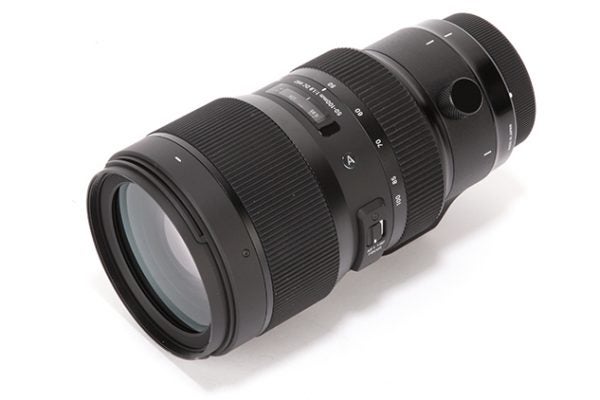Is the Sigma 50-100mm f/1.8 DC HSM A as good as the first APS-C zoom lens with a maximum aperture of f/1.8? Michael Topham finds out
Sigma 50-100mm f/1.8 DC HSM | A Review

Not content with just the one optic in the Global Vision Art series of fast-aperture lenses, Sigma’s engineers have burnt the midnight oil and produced their second f/1.8 zoom, which was showcased for the first time at the CP+ show in Japan earlier this year. Ever since wraps first came off the Sigma 50-100mm f/1.8 DC HSM A we’ve been eagerly waiting to lay our hands on a review sample to find out how well it performs at covering the focal lengths of three popular prime lenses and whether it’s another lens APS-C DSLR users should be adding to their wish list.
Sigma 50-100mm f/1.8 DC HSM | A – Features
Firstly, it’s important to take note of the initials ‘DC’ in its name. This indicates it’s a lens that’s optimised for DSLRs with APS-C size image sensors and just like Sigma’s 18-35mm f/1.8 DC HSM cannot be used on full frame cameras without vignetting. The effective angle-of-view is equivalent to 75-150mm when it’s paired with an APS-C DSLR with a 1.5x crop factor, or 80-160mm when it’s coupled to a Canon APS-C DSLR that imposes a 1.6x multiplication. The fact it covers three popular focal lengths in one (85mm, 105mm and 135mm) makes it a highly attractive proposition for photographers who’d like to avoid carrying three prime lenses, whilst also saving the hassle of interchanging lenses on the go – a frustratingly slow process that can sometimes prevent capturing a shot at the opportune moment.

Recognised as a mid-telephoto zoom, it’s a lens that’ll see regular use in the hands of those who like to shoot portraiture and document events such as weddings, but its large aperture also makes it a great candidate for other subjects and environments such as sports, or low-light scenes where a couple of extra stops can be beneficial. It should also be noted that it’s a parfocal lens, meaning that once focus is acquired, the lens maintains that focus at all focal lengths – a particularly useful feature for video and filmmakers.
The construction of the lens features 21 glass elements arranged in 15 groups and to help minimise axial and transverse chromatic aberration, three of these elements are the ‘F’ low-dispersion (FLD) type, one is the special low dispersion (SLD) variety and there are a further three high-refractive index SLD glass elements. With such a complex arrangement of glass, it’ll come as no surprise that what we’re looking at is a fairly heavy lens and at 1,490g it works out only 50g lighter than Nikon’s AF-S NIKKOR 70-200mm f/2.8G ED VR II telephoto zoom.

Like many of the Sigma lenses we’ve reviewed of late, the lens flaunts a nine-blade aperture to create attractive blur in the out-of-focus areas of the image and features Sigma’s Hyper Sonic Motor (HSM), which in addition to driving the autofocus system offers full-time manual focusing; allowing users to adjust the focus manually at any time without having to flick the AF/MF switch to manual first. The only difference to the HSM motor is that the size of some of the components have reduced, resulting in the motor being 30% slimmer than before.
The diameter of the diaphragm is the second largest in the Sigma lens line-up after that of the monstrous Sigma 200-500mm f/2.8 EX DG. To ensure the diaphragm operates as smoothly as possible, the diaphragm blades are constructed from a carbon feather film, with the rest of the unit being made from a new polycarbonate material that’s claimed to be exceptionally durable and wear resistant. As has become standard practice on Sigma lenses, the lens employs Super Multi-Layer Coatings to prevent flare and ghosting from presenting problems when shooting towards the light. Other features include a minimum focusing distance of 95cm and it’s available in Canon, Nikon and Sigma mounts, accepting filters and adapters via an 82mm thread at the front.

The lens is presented in a soft case to offer extra protection when it’s stored or being transported, and as well as a rear cap and a sizeable front lens cap, a large plastic petal-shaped lens hood is supplied, which is finished in two-tone black and attaches securely to the front with a simple 90° twist.





